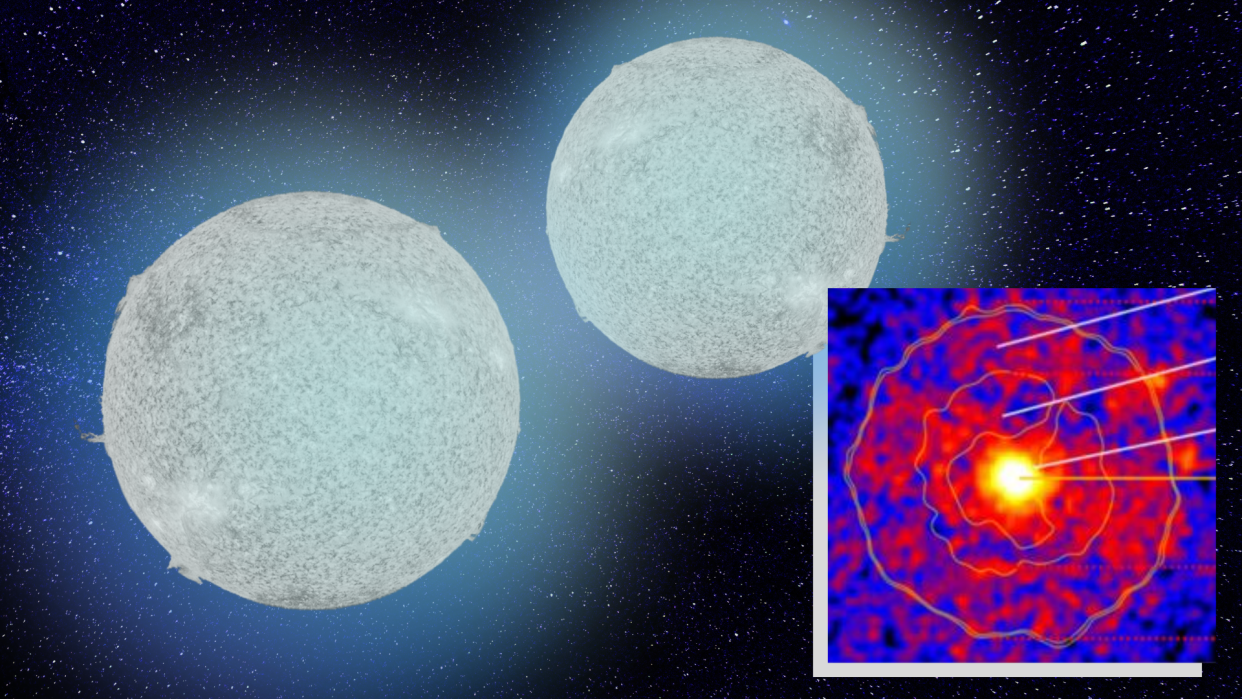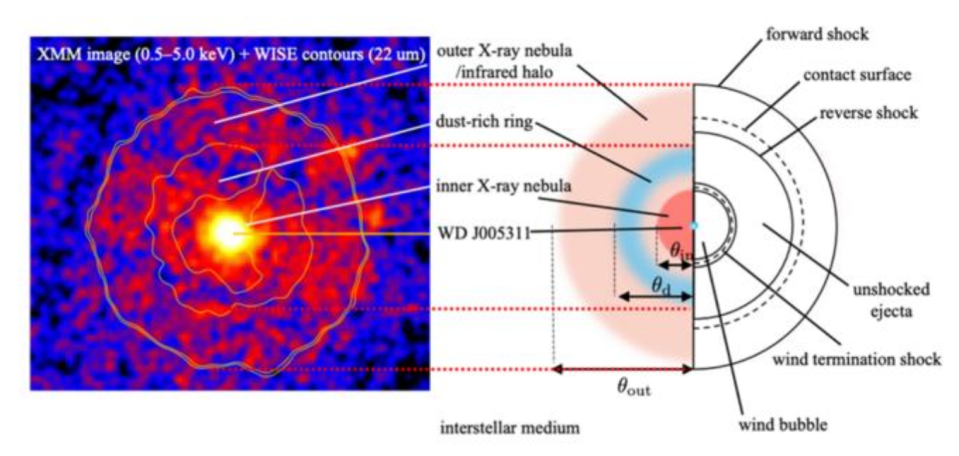Cosmic crime scene reveals ancient supernova aftermath of dead star merger

The ultimate cosmic "cold case" has lingered for 843 years — and now, space detectives may have solved it at last. In 1181 AD, as the Genpei War raged in Japan, a mystery "guest star" briefly flashed over Asia's skies. Astronomers had puzzled over the brief event until 2021, when a team of researchers tracked it to its location in the cosmos. Yet, the cause of the event, now designated supernova (SN) 1181, remained shrouded in mystery.
That was until a team of scientists used computer modeling and observational analysis to recreate the event, finding it was a supernova caused by two "dead star" white dwarfs colliding together. The structure of the remnant white dwarf and leftovers of double shock formation were left behind by the rare occurrence of these two colliding white dwarfs.
But there is more. The same team found that, as recently as 20 to 30 years ago, high-speed stellar winds began blowing from the surface of the remnant white dwarf. This discovery emphasizes the power of combining the cutting-edge science of modern astronomy with historical records to learn about the cosmos. More specifically to these findings, the new results could help better understand the variety of supernovas.
"There are many accounts of this temporary guest star in historical records from Japan, China and Korea. At its peak, the star's brightness was comparable to that of Saturn," team leader Takatoshi Ko, from the Department of Astronomy at the University of Tokyo, said in a statement. "It remained visible to the naked eye for about 180 days until it gradually dimmed out of sight. The remnant of the SN 1181 explosion is now very old, so it is dark and difficult to find."
Related: Peer inside remnants of an 800-year-old supernova and see a 'zombie' star
'Dead stars' clashing in the heavens
White dwarfs are the cooling stellar embers created when stars with masses similar to that of the sun die. As these stars exhaust hydrogen, the fuel needed for nuclear fusion in their cores, the outward push of radiation pressure created by this process also ends. This ends a stellar tug-of-war that the radiation pressure has waged with the inward push of the stars' own gravities for billions of years.
With gravity the victor in this cosmic challenge, these stars' cores undergo gravitational collapse, shedding their outer layers during the so-called red giant phase. Our star, the sun, will undergo this process in around 5 billion years, swelling out to around the orbit of Mars as a red giant and swallowing the inner planets, including Earth.
Eventually, the outer layers of these deceased stars drift away, leaving cooling stellar cores as cosmic embers around the size of Earth, called white dwarfs.

While the sun enjoys a solitary existence, an estimated 50% of stars with comparable masses are located in binary systems with another star, which itself can become a dense and compact white dwarf.
As binary white dwarfs swirl around each other, they emit tiny ripples in space and time called "gravitational waves" that carry away angular momentum and cause the white dwarfs to draw together. Conventional wisdom suggests this collision destroys both white dwarfs, but in rare events called Type Iax supernovas, a single, rapidly spinning white dwarf is left behind.
This new research suggests that SNR 1181 is what remains of just such a supernova. Observations of this remnant have also shown that SNR 1181 seems to be made up of distinct outer and inner shock regions. Ko and colleagues analyzed X-ray data from SNR 1181 to create a computer model to explain the observations and recreate the evolution of the event's structure. For instance, they wanted to understand why the colliding dead stars left behind a daughter white dwarf.

Just after its formation as this white dwarf span, the object should have been shedding a rapid stream of particles called a "stellar wind." Yet, the team discovered something that defied their expectations.
"If the wind had started blowing immediately after SNR 1181's formation, we couldn’t reproduce the observed size of the inner shock region," Ko explained. "However, by treating the wind’s onset time as variable, we succeeded in explaining all of the observed features of SNR 1181 accurately and unraveling the mysterious properties of this high-speed wind. We were also able to simultaneously track the time evolution of each shock region, using numerical calculations."
Even more surprising to the team was the revelation that the stellar wind from this clash-created white dwarf seems to have only begun recently, perhaps as recently as two decades ago.
The finding could imply that some form of nuclear fusion is still occurring within the white dwarf, which has caused it to begin "burning" again. This may be the result of the Type Iax supernova that would have been seen by combatants on Earth as they struggled for control of Japan during the Genpei War. The war, which began in 1180 and ended five years later, was waged by the Taira and Minamoto clans. It saw the Taira's fall and the Kamakura shogunate's establishment.
Related stories:
— Aftermath of 2 star explosions captured in breathtaking new NASA image
— Astronomers catch rare glimpse of oldest known supernova, which dates back to Year 185
— These supernovas are whipping up a storm, contributing to cosmic life and death
The team behind these findings will now attempt to confirm the results with further observations of SNR 1181 using the Very Large Array (VLA) radio telescope based in New Mexico and the 8.2-meter Subaru Telescope at the summit of Maunakea in Hawaii.
"The ability to determine the age of supernova remnants or the brightness at the time of their explosion through archaeological perspectives is a rare and invaluable asset to modern astronomy," Ko said. "Such interdisciplinary research is both exciting and highlights the immense potential for combining diverse fields to uncover new dimensions of astronomical phenomena."
The research is published on July 5 in The Astrophysical Journal.

